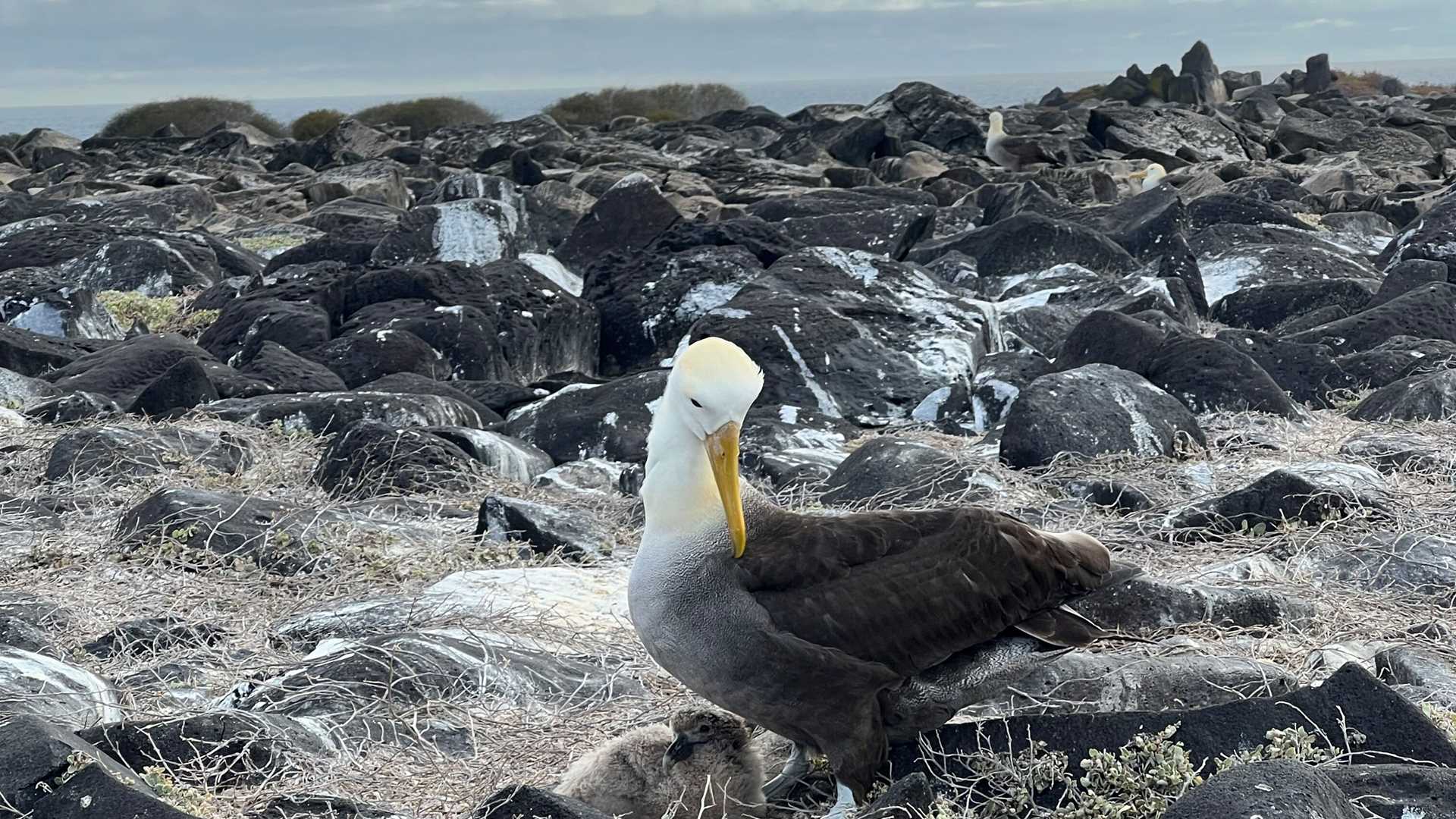Guests on board National Geographic Endeavour II spent the day exploring Española Island. We began the day with various activities, including an early morning kayak outing and stretching on the beach. Guests enjoyed watching a beautiful sunrise at Gardner Bay. After breakfast, guests received a snorkeling briefing and appropriate gear. We disembarked for beach time and snorkeling trips. Some guests opted to go to the beach with a naturalist for deep water snorkeling. While snorkeling, guests swam with Galapagos sea lions. They are so incredibly playful and curious. As higher order marine mammals, they learn through socializing, activities, and play. One guest received a little nibble on their fin from a particularly curious sea lion. Sea lions seem to gather around us as soon as we enter the water; they are so curious about what we are and if we’re playful, too!
After lunch, we disembarked once more to Punta Espinoza. Guests had the option of a long walk along lava rocks or a shorter beach walk. We saw lots of baby Galapagos sea lions on the beach, some only days old. We saw two babies with part of their umbilical cords still attached. We also saw some evidence of afterbirth along the trail. Two Galapagos hawks were perched on a lava rock while the new mother was feeding a new hatchling. There were several blue-footed boobies along the trail with brand new hatchlings as well.
Perhaps the most exciting baby sighting along the trail was the waved albatross. The waved albatross is endemic to Española Island. These iconic birds remain in the Galapagos for most of the year, except for a few months when they go to the nutrient rich waters of Peru to feed. There are thousands of pairs of waved albatrosses in the Galapagos. New albatross parents tag team with one another to feed nutritionally pack squid oil to their rapidly growing hatchlings. Waved albatrosses soar for extended periods of time by employing an incredibly energetic and efficient technique of riding thermal currents.
Photo caption and photographer: A waved albatross sits just off the trail at Punta Suarez with a new hatchling. The waved albatross feeds their offspring nutrient rich oil that they regurgitate after fishing. The waved albatross only nests at one site in the world: Española Island in the Galapagos. Photo by Alexandra Widman







